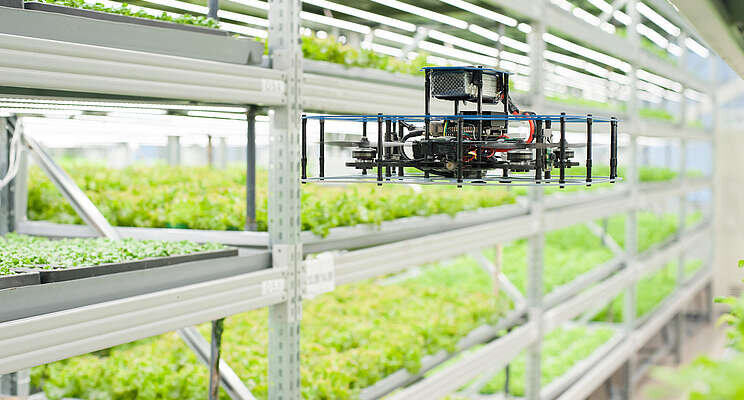NASA research launches a new generation of indoor farming
Added on 09 December 2021

The United Nations predicts Earth will have to feed another 2.3 billion people by 2050, mostly concentrated in urban centers far from farmland. Conventional agriculture may not be able to meet that demand, but luckily NASA has been working for decades to tackle food production both on Earth and in space. Feeding astronauts during long-term space exploration means stretching resources to grow plants in space - including minimizing water use and energy consumption and eliminating soil.
NASA initially pioneered these techniques on the ground by building the country's first vertical farm. Inside a decommissioned hypobaric chamber left over from testing the Mercury space capsule, technologists stacked rows of hydroponic trays like bookshelves against the walls. Then systems for lighting, ventilation, and circulating water were added using off-the-shelf parts. Various crops were planted on the stacked trays to test how well they would grow in water and without the benefit of sunlight or open air.
This innovative approach to farming created a foundation for the industry of controlled environment agriculture, or CEA.
CEA combines plant science and environmental control to optimize plant growth and maximize efficiency, frequently incorporating vertical growth structures. Technology enables the filtering of contaminants from crop water and delivers precise nutrient balances. Artificial lighting provides only the necessary wavelengths at the right time, intensity, and duration. While environmental controls maintain ideal temperature and humidity.
This approach could help feed burgeoning future generations, said Nate Storey, chief science officer at Plenty Unlimited, one of several companies building on NASA's plant-growth research.
Redefining Data Farm
Plenty uses less than 1% of the water of traditional farming, and the company's two-acre farm produces similar yields to a 720-acre outdoor farm.
Currently a global market worth $2.9 billion, some estimates project the vertical farming market could reach $7.3 billion by 2025.
"The entire industry is built on NASA research," said Storey. Since its early days, NASA has explored bioregenerative life-support systems, with plants recycling waste, producing food and oxygen, and eliminating carbon dioxide. The Closed Ecological Life Support System program originated with the Life Sciences Division at NASA's Kennedy Space Center in Florida, funding university research to identify the best plants and their ideal growth conditions, and the agency built growth chambers to expand on those findings.
Click here to read more.
Photo Courtesy of iFarm
Source: Agritech Tomorrow
More news















